Dateline: Vista, CA (20180410)
Hiking is not risk free. Face it. Living life anywhere is not risk free. Based on actual number of deaths, the following is how I size up the risks to be encountered while hiking and what I’m doing to mitigate those risks.
The View from 10,000 Feet
Vicki Parker, in her article posted at skyaboveus.com, sets the stage (blue highlights are mine):
While the exact number of hikers nationwide may be an unknown, the NPS (NPS=National Park Service) reported 3,582 search and rescue (SAR) incidents in 2011 and 2,876 in 2012. More recently, the NPS reported 2,348 in 2013 and 2,658 in 2014. On average, 35 SARs (SAR = Search and Rescue) resulted in a hiking-related fatality. Hiking injuries overall totaled 817 in 2011; 922 in 2012; 826 in 2013; and 829 in 2014. This excludes some categories which are still technically hikers such as “Hunting – Gathering.” And bear in mind – this is just the NPS’ statistics. The Bureau of Land Management and US Forestry Service’s numbers are not reflected here.
In the years 2010 through 2014, 192 SARs were hiking-related fatalities. And the reasons for injury and death are noteworthy. The largest percentage of deaths for years have been consistently attributable to three things: lack of knowledge, lack of experience, and poor judgment. In fact, deaths related to lack of knowledge and experience by far outnumber deaths attributed to falls.
Risks and Mitigation
Taking information from the sources I’ve listed below, I’m ranking risks after only on an hour or so of data extraction from the internet (as I’ve got more enjoyable and valuable things to do with my time than focus on deadly things). Since all of us know that EVERYTHING we read on the internet is true, it didn’t seem like it warranted much more time. However, since I only need ONE of these risks to kill me, I figure it’s worth putting it on the list and to consider what I’d do to mitigate that risk.
Risk: Lack of Knowledge
 Lack of knowledge can be mitigated by getting information. That’s a lot easier today than it was when I first started backpacking in the late 70’s. Back then I was pretty well prepared, and even more so after taking a backpacking course at the local community college in the early 80’s. However, information technology has changed and there’s no excuse, other than laziness, for failing to gather the necessary knowledge.
Lack of knowledge can be mitigated by getting information. That’s a lot easier today than it was when I first started backpacking in the late 70’s. Back then I was pretty well prepared, and even more so after taking a backpacking course at the local community college in the early 80’s. However, information technology has changed and there’s no excuse, other than laziness, for failing to gather the necessary knowledge.
Small volume printing and blogging has enabled the creation of a plethora of publications specific to long distance hiking. They cover everything from the basics, like what you’ll need to carry, to the esoteric, like the physiological impacts of the trail and post-trail depression.
YouTube videos documenting the trail, it’s challenges, and the wide variety of experiences are readily available. As I’ve mentioned before, my favorite YouTube author is Jessica Mills, aka Dixie, at HomeMade Wanderlust and her PCT 2017 Thru-hike. Darwin at Darwin onthetrail comes in a close second. They have both completed the Appalachian Trail. Dixie did the PCT in 2017 and is starting on the Continental Divide trail very soon. Darwin is starting his PCT hike just a couple of weeks before me. I might run into him, but I doubt it because I suspect he’ll be too far ahead of me. The reason I like both of these authors is that they tend to get to the point and give me executable information, yet they still present the reality of experience. With all of the great times, there are some tough times also. To quote Darwin (and others), “Embrace the suck.”
Even right now, I’m able to see YouTube videos of people on the PCT at this moment who are walking the exact same paths I’ll be traveling in a few weeks. Certainly our experiences will differ as the weather will change. Nonetheless, my experiences should be fairly close or predictable based on their experiences. For example, if the seasonal creek is dry now, it’s unlikely it will be flowing when I get there later this spring.
There is no lack of resources from which to gain knowledge.
Lack of Experience
 Experience. Isn’t that what you get when you don’t get what you want? While there’s no substitute for experience, there’s only one way to get it. You have to experience it.
Experience. Isn’t that what you get when you don’t get what you want? While there’s no substitute for experience, there’s only one way to get it. You have to experience it.
I’ve had enough backpacking, camping, skiing, and river running experience to know what to expect in good situations and to extrapolate for the bad. That said, I’d been sailing for over 40 years when my wife and I, accompanied by our sons, left to go cruising on our sailboat. I learned more in the three weeks that followed than I had in forty years of sailing in San Diego’s perfect weather.
Will the expectations and extrapolations of my backpacking experience prove to be adequate? Stay tuned. We’re about to find out.
Poor Judgement
 Well, you’ll have to be the judge of ‘Poor Judgement’. Although, here’s a case where I think the knowledge and experience discussed above come into play. I have seen it time and again in videos I’ve been reviewing that the poorest decisions people make are when they are tired, generally at the end of their day. Dixie demonstrates this observation extremely well in her My Dumbest Backpacking Mistakes, especially the White Fork river crossing at 11:30 into the video.
Well, you’ll have to be the judge of ‘Poor Judgement’. Although, here’s a case where I think the knowledge and experience discussed above come into play. I have seen it time and again in videos I’ve been reviewing that the poorest decisions people make are when they are tired, generally at the end of their day. Dixie demonstrates this observation extremely well in her My Dumbest Backpacking Mistakes, especially the White Fork river crossing at 11:30 into the video.
So, my main action to mitigate poor judgement will be to ‘chill’, take it easy, stop early. The second action will be to continually look ahead, consider the coming day, and determine how to maximize my enjoyment.
Earth (Falling on to it)
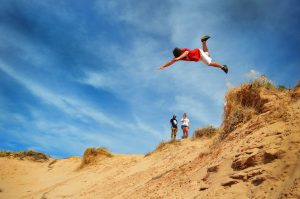 Falling to earth I get in a big way (one that will kill you) and I’ve recently, due to a YouTube video, started to appreciate this in a small way (one that will take you off the trail).
Falling to earth I get in a big way (one that will kill you) and I’ve recently, due to a YouTube video, started to appreciate this in a small way (one that will take you off the trail).
Falling to Earth in a Big Way
Back in the 1980s, I was immortal. I also had no fear of heights. Slowly, over time, various events caused me to lose my immortality. One of those events took away a big chunk of immortality and caused me to develop a healthy respect for heights. Fortunately, there was no bad event, just a change in perspective.
It happened on a trip to Mount Whitney. I was heading to the summit with 4 other friends. However, due to some permitting issues, I was hiking alone on a different trail and planned to meet up with them the next day or two depending on my route. At one point, I’d walked over to the edge of a cliff overseeing the valley my friends would be hiking up.
As I looked over the edge, I pondered the depth. I picked up a small pebble, no further across than a dime. With a gentle flick of my wrist, and using no arm motion, I released the pebble over the side. I counted for 9 seconds before it hit. 9 seconds. A bit of math suggests that 1300 feet is required for a 9 second free fall.
The wind was gusting that day. I had on a full pack, much larger than the one I will carry on the PCT this year. As I stood on the precipice, it dawned on me. No one really knows where I am. I’m right on the edge and I’m being buffeted around quite a bit. The rock here is pretty loose. If I were to fall, it could be days before anyone would begin to look for me. They wouldn’t really know where to start. I wouldn’t be close to any trail by the time I hit the bottom, not that it would matter much to me at that point.
I gently took a couple of steps back from the edge and felt a little less immortal. After that, I found myself less interested in standing right on the edge to look out from tall places like buildings, cliffs, and even bridges. The feelings persist to this day, nearly 40 years later.
Falling to Earth in a Small Way
My appreciation for the ‘small way’ of falling to earth came from this poor sole, Jennifer, AKA Showtime, who describes her event in PCT Week 1, and why I’m leaving. (I’ll jump you into her video at about 1:30 to get the background). Bottomline, even small falls can be painful and possibly debilitating.
Water (Too much of it) – Drowning
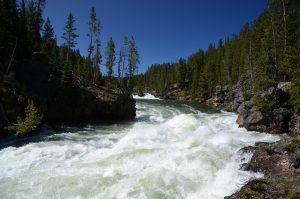 Drowning is a big concern for me. Not because I can’t swim. I swim very well thank you. However, I know all to well the force that water can exert. I’ve spent many years sailing with plenty of beach landings in a dinghy and snorkeling.
Drowning is a big concern for me. Not because I can’t swim. I swim very well thank you. However, I know all to well the force that water can exert. I’ve spent many years sailing with plenty of beach landings in a dinghy and snorkeling.
Rivers in the Sierras mandate respect. My plan is to give them all the respect I can muster. I’ll carry trekking poles for added stability and seek like minded people to cross with me.
Water (Too little of it) – Dehydration & Dying of thirst
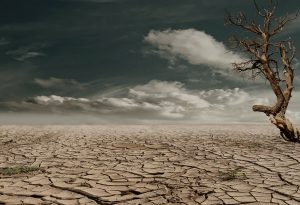 Dehydration is also a big concern from me. Not because I’m unaware. My youth was spent in the arid deserts of the southwest. However, while I prefer the heat over the cold, when it is hot and dry, my body uses a lot of water. Based on my continuing excessive perspiration after returning to the classroom from recess in elementary school, I know I sweat a lot more than most people. That’s good for keeping cool, but it means needing more water.
Dehydration is also a big concern from me. Not because I’m unaware. My youth was spent in the arid deserts of the southwest. However, while I prefer the heat over the cold, when it is hot and dry, my body uses a lot of water. Based on my continuing excessive perspiration after returning to the classroom from recess in elementary school, I know I sweat a lot more than most people. That’s good for keeping cool, but it means needing more water.
The good news is, we’re not in Houston anymore. I’ve known people in Houston to suffer from heat stroke. They had plenty of water, but the air was so humid that the lack of evaporation failed cool their body. On the PCT, it will always be plenty arid to evaporate sweat. As long as I have water, I should be able to keep cool.
How am I going to find that water? Well, the PCT Water Report is a crowd sourced compilation of water information. Hikers and equestrians submit their observations to a volunteer who stewards the document. That is FANTASTIC. My sincere appreciation goes out the volunteers that maintain the Water Report and the people who provide the updates.
Health Issues – Heart attacks, ruptured appendix, infections, & Physical Condition
 So, I’m 60. And while I’m definitely not in the physical condition I was when I was 20, all the years of running, biking, and swimming have paid off. While I can’t keep up with the 20 year olds, there’s a lot of 30 year old people in the general population that I can pace. Nonetheless, that alone may not be good enough for a hike of this magnitude.
So, I’m 60. And while I’m definitely not in the physical condition I was when I was 20, all the years of running, biking, and swimming have paid off. While I can’t keep up with the 20 year olds, there’s a lot of 30 year old people in the general population that I can pace. Nonetheless, that alone may not be good enough for a hike of this magnitude.
So, to mitigate risks in this area, I’m training. I’ve been walking between 4 and 6 miles almost daily. The walks have some decent vertical climbs. I’ve also been to the doctors to get a physical which I’ve not done since 2013 and not for decades before that visit. I like doctors. I’m just not a big fan of going to see them at their offices and much less in a hospital.
Heart attacks sort of run in the family. However, I’ve taken that risk seriously my entire life. I’ve been doing some cardio exercise and avoiding, generally speaking, the American Cardiac Arrest Breakfast most of my life.
I believe there’s been a ruptured appendix or two in our family history also. I don’t expect to have that happen … until it does.
I’ll watch for infections and get off trail if needed.
For all of these potential risks and more, I’m carrying an emergency beacon on the trail with satellite connection and an SOS button.
Lightning Strike
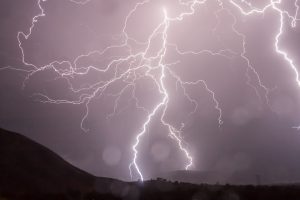 From a NOAA report prepared by Vaisala, from 1959 to 2016, lightning has caused 4114 deaths. That’s just over 70 people per year. However, where the PCT is located, California, Oregon, and Washington, there’s only been 48 deaths, or less than a person per year. On a population weighted basis of lightning deaths by state and US territories, Oregon, California, and Washington rank 48, 49, and 50. Only Alaska and Hawaii rank lower.
From a NOAA report prepared by Vaisala, from 1959 to 2016, lightning has caused 4114 deaths. That’s just over 70 people per year. However, where the PCT is located, California, Oregon, and Washington, there’s only been 48 deaths, or less than a person per year. On a population weighted basis of lightning deaths by state and US territories, Oregon, California, and Washington rank 48, 49, and 50. Only Alaska and Hawaii rank lower.
As noted by Whimsical Hikers, with lightning you might not even go out with a glorious bolt of lighting reaching from the sky to your body… 50% of lightning induced injuries and death come from ground current and an additional 30% from side splash, where lightning jumps from person (or object) to person, so death can happen as far as 60 feet from where lightning strikes the ground.
Given the low odds, I’ve likely put lightning too high on my list. Still, I think it will be prudent to not do anything stupid like climbing to the highest peak and extending my trekking poles skyward during a lightning storm.
Temperature – Freezing to Death
 Again from Whimsical Hikers:
Again from Whimsical Hikers:
“On the other hand, cold can happen very quickly as sudden changes in weather can result in severe temperature drops in a matter of minutes. You also experience a state of delirium, making very poor decisions and often coming to the conclusion that you are too hot – many freezing victims are found outside of their shelter and in a state of disrobe, potentially giving new meaning to the phrase, “frozen stiff”.’
I’ve got great gear and plenty of layers to address cold temperatures … as long as climate change doesn’t toss me anything to outrageously crazy. I’ll avoid camping in low valleys and on mountain tops to avoid some of the extremes.
Temperature – Heat stroke
 Once more from Whimsical Hikers:
Once more from Whimsical Hikers:
“If you get too hot, your brain starts cooking. The good news is you probably won’t notice, because you’ll be more interested in your convulsions, except you might not notice the convulsions because you’ll be delirious.”
For the PCT, what is needed here is water. I’ll also avoid hiking in the desert at mid-day. I might even try some night hiking, something I’ve never done before. I’m also carrying an umbrella, another thing I’ve never done before. Mostly, I’ll listen to my body. While I’ve never had heat stroke, I’ve discussed it with someone who has and have heard how surprisingly debilitating it can be when it strikes unexpectedly.
Avalanches
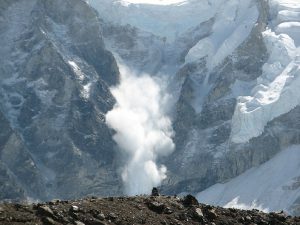 Skiing has taught me a lot about avalanches. I’ll watch the weather, but plan to avoid dangerous avalanche situations. Hiking in spring and summer should help with that a lot.
Skiing has taught me a lot about avalanches. I’ll watch the weather, but plan to avoid dangerous avalanche situations. Hiking in spring and summer should help with that a lot.
Mosquito Bites
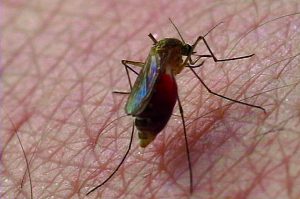 Oh yeah, we can talk about mosquitoes. Rose and I saw plenty of these when living in Texas and sailing in Central America. I’ve seen dozens of them on my arms at the same moment in the Sierras even after applying an excessive amount of DEET. I hate mosquitoes. My plan is to have the right clothing, head net, and tent. I’ve got the insecticides, but I hope to use them only minimally, if at all.
Oh yeah, we can talk about mosquitoes. Rose and I saw plenty of these when living in Texas and sailing in Central America. I’ve seen dozens of them on my arms at the same moment in the Sierras even after applying an excessive amount of DEET. I hate mosquitoes. My plan is to have the right clothing, head net, and tent. I’ve got the insecticides, but I hope to use them only minimally, if at all.
Ticks
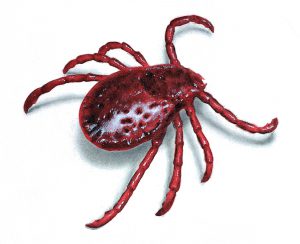
I’ve never seen a tick in San Diego, or anywhere else in California for that matter. HOWEVER, just last week I was watching a video of an early 2018 PCT Thru Hiker where he recorded his first tick on the trail. There’s a lesson there. I suspect now I’ll be more careful about any trips I take into the grass and bushes and I’ll be looking for the little buggers. I’m going to have to do some research as to what to do if I find one. I seem to remember something about using the fire from a match to make them let go and drop off, but that lesson was from elementary school and I don’t have any matches.
Rattlesnakes
 Last week, while on a training hike, I saw my first rattlesnake of the season … and I wasn’t exactly off in the wilderness. It was in an area surrounded by houses.
Last week, while on a training hike, I saw my first rattlesnake of the season … and I wasn’t exactly off in the wilderness. It was in an area surrounded by houses.
When it comes to rattlesnakes, my plan is simply to not surprise them and live and let live. Beyond that, I believe we’ll get along swimmingly.
Eating Poison Mushrooms
 I so want to learn about what things I can get in the wild. Of course, the potential risks exposed by Christopher McCandless and so eloquently presented in the movie ‘In to the Wild’ is likely to keep me away from mushrooms. There is a bit of a debate about what really caused Chris’s demise. However, the message is clear regardless of the details. My mitigation is simply “don’t eat the mushrooms.”
I so want to learn about what things I can get in the wild. Of course, the potential risks exposed by Christopher McCandless and so eloquently presented in the movie ‘In to the Wild’ is likely to keep me away from mushrooms. There is a bit of a debate about what really caused Chris’s demise. However, the message is clear regardless of the details. My mitigation is simply “don’t eat the mushrooms.”
Being eaten by a Grizzly Bear
 It’s pretty unlikely, nay impossible, that I’ll see a Grizzly Bear in California unless I go to the zoo or look at the state flag. They don’t scare me much in the zoo or on the flag.
It’s pretty unlikely, nay impossible, that I’ll see a Grizzly Bear in California unless I go to the zoo or look at the state flag. They don’t scare me much in the zoo or on the flag.
Being Attacked by a Black Bear
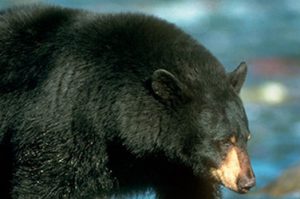 Well, that’s possible. As reported by the California Department of Fish and Wildlife (CDFW), the population of Black Bears in California has been on the rise from between 10,000 to 15,000 in 1982 to between 25,000 to 30,000 in 2012. It could be has high as 40,000 if the earlier trend has continued to 2018. It’s reported that 40% of them are in the Sierra Nevada mountains with a population density of between 0.5 and 1.0 bears per square mile.
Well, that’s possible. As reported by the California Department of Fish and Wildlife (CDFW), the population of Black Bears in California has been on the rise from between 10,000 to 15,000 in 1982 to between 25,000 to 30,000 in 2012. It could be has high as 40,000 if the earlier trend has continued to 2018. It’s reported that 40% of them are in the Sierra Nevada mountains with a population density of between 0.5 and 1.0 bears per square mile.
I’ll try to minimize my appeal by doing a good job storing my food and trying to not spill it on me. I also plan to eat away from where I camp. Oh, and run faster than the other hikers if needed.
Being Eaten by a Cougar
 Again, that’s possible. As of 2014, the CDFW “guesstimated” the population of mountain lions in California to be between 4,000 to 6,000 statewide. That’s a density of between 0 to 10 lions per 100 square miles.
Again, that’s possible. As of 2014, the CDFW “guesstimated” the population of mountain lions in California to be between 4,000 to 6,000 statewide. That’s a density of between 0 to 10 lions per 100 square miles.
I know we have cougars in San Diego, but I’ve never seen one in the wild. Once, and only once, I saw a cat track up on Mount Palomar in the early 80’s.
I have been told by a park naturalist that the University of California, San Diego tracked cougars in San Diego a couple of decades ago. They had located and were tracking 11 of them. We learned from their study that, unlike the shy, ‘stay-at-a-long-distance’ cats we thought cougars to be, the big cats were actually right there, next to the trail, watching the hikers and other people pass by. Fortunately, we were mostly of little interest to them. Unfortunately, as we’ve learned here in Southern California, a mountain biker (biker, not hiker) can move at the right speed to be very interesting prey for a big cat.
My plan is to pay attention, try to “look large”, and not act like prey or something with which the big cat would like to play.
Being eaten by a pack of wolves
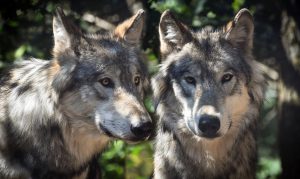 While possible, it’s extremely unlikely I’ll be eaten by a pack of wolves in California. Quoting about wolves from the CDFW:
While possible, it’s extremely unlikely I’ll be eaten by a pack of wolves in California. Quoting about wolves from the CDFW:
-
In 2011 a gray wolf designated OR7 by the Oregon Department of Fish and Wildlife (ODFW) dispersed from his home pack in Oregon and entered California in December, 2011. He returned to Oregon in 2013, mated, and sired pups in 2014. His pack in Oregon is designated as the Rogue Pack.
-
In May and July, 2015 images were captured on a trail camera in Siskiyou County of a single adult, black wolf. Additional cameras were placed in the vicinity and in August, 2015 images of two separate adult black wolves, and five pups were captured. The California Department of Fish and Wildlife (CDFW) designated these animals the Shasta Pack. These are the only wolves known to occur in California at this time.
So, while there may be some, I’m not to likely to see a wolf in California … unless they escape from the zoo. Maybe when I get to Oregon I’ll have a better chance of meeting a wolf.
Being attacked by a pack of coyotes
 I see coyotes frequently. We’ve encroached on their habitats so they are evolving their dining habits. They remind me of the alligators we had in the bayous in Texas. Small dogs, cats, and little kids BEWARE. Adult people, not so much.
I see coyotes frequently. We’ve encroached on their habitats so they are evolving their dining habits. They remind me of the alligators we had in the bayous in Texas. Small dogs, cats, and little kids BEWARE. Adult people, not so much.
Closing
Vicki Parker reminds us:
“Hiking should not be inherently risky but adding just one pitfall — standing too close to the edge, inadequate gear/resources, lack of preparedness for the unforgiving elements, — and suddenly, hiking can become much riskier than climbers secured on rope with a belayer.’
“Though the NPS is stepping up its game, the best trained rescuers in America will not likely alter the fact that roughly 3% of SARs each year are body recoveries. The only thing that can eliminate or reduce hiking-related injury or death is for hikers to hit the trails with a balanced mind as well as a balanced pack.’
My plan: Avoid the pitfalls. Be balanced.
Fair winds
Side note: In case you’d like to get some perspective on other risks to your life:
Your Chances of Dying
Source: Best Health Degrees
Sources:
- What’s Killing American Hikers from Vicki Parker posted at skyaboveus.com 20170226
- Causes of Backpacking and Hiking Deaths from Whimsical Hikers 20160521
- Your Chances of Dying captured 20171114
- 17 Things Scarier Than Bears On The Pacific Crest Trail 20140318
- Forget bears: Here’s what really kills people at national parks 20150812
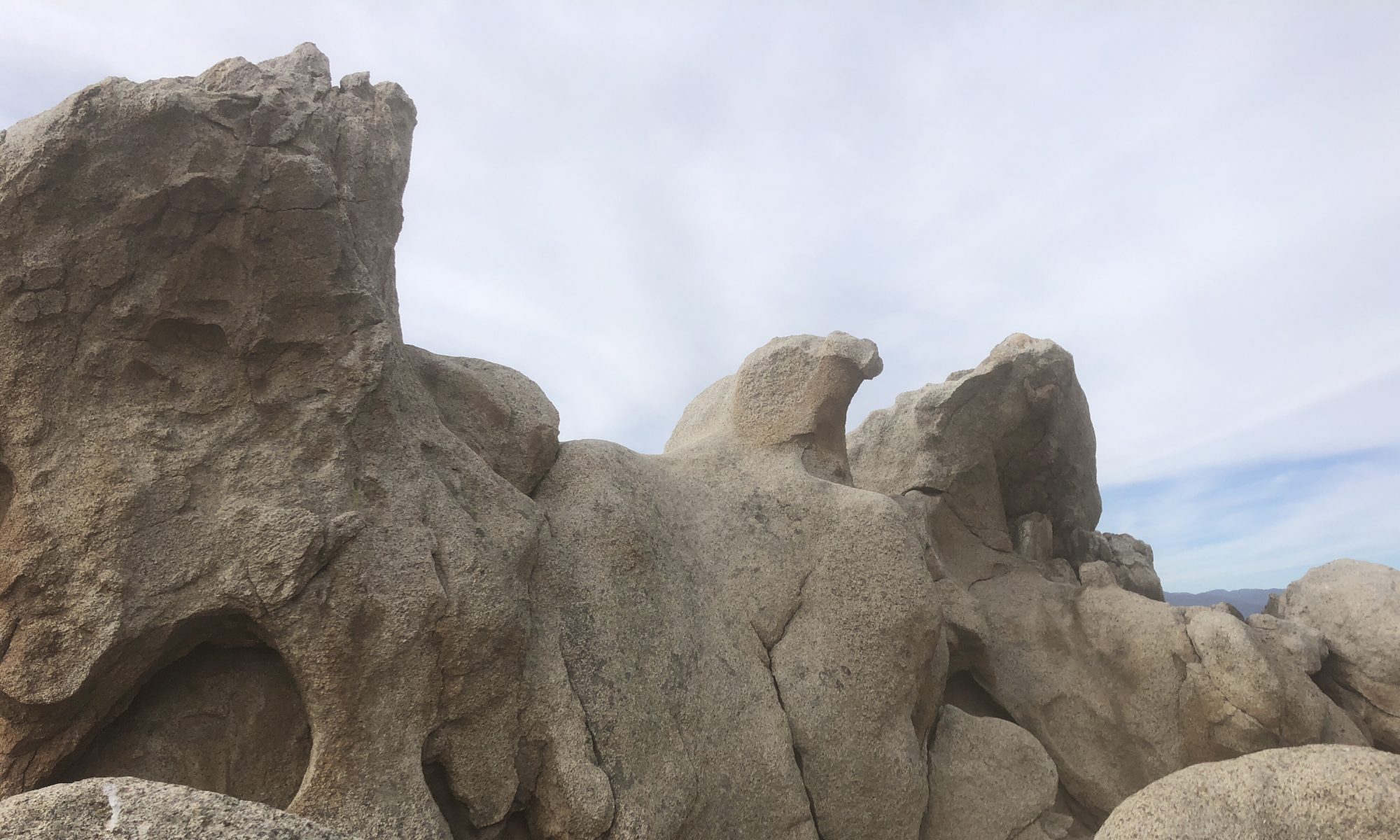
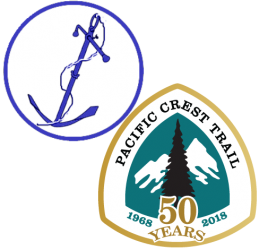
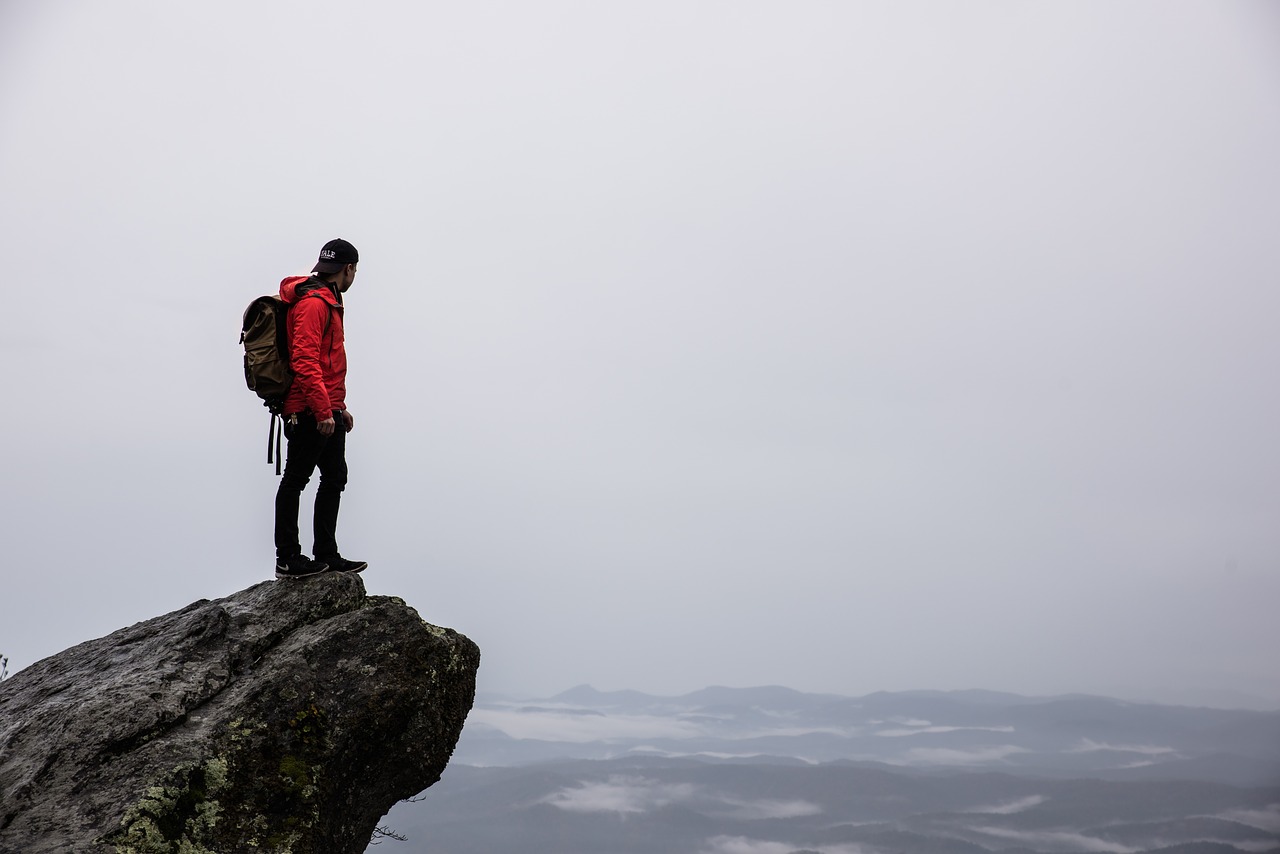
Love this– It reads like a conversation of things your mother worries about. Glad mosquitos ranked higher than bear attacks. Also, I’m certain the dumbest thing we’ve ever done while backpacking had to do with a river crossing and just wanting to get back. So, yes, chill and using good judgement should go a very long way (things mothers want to teach their children!).
xo.